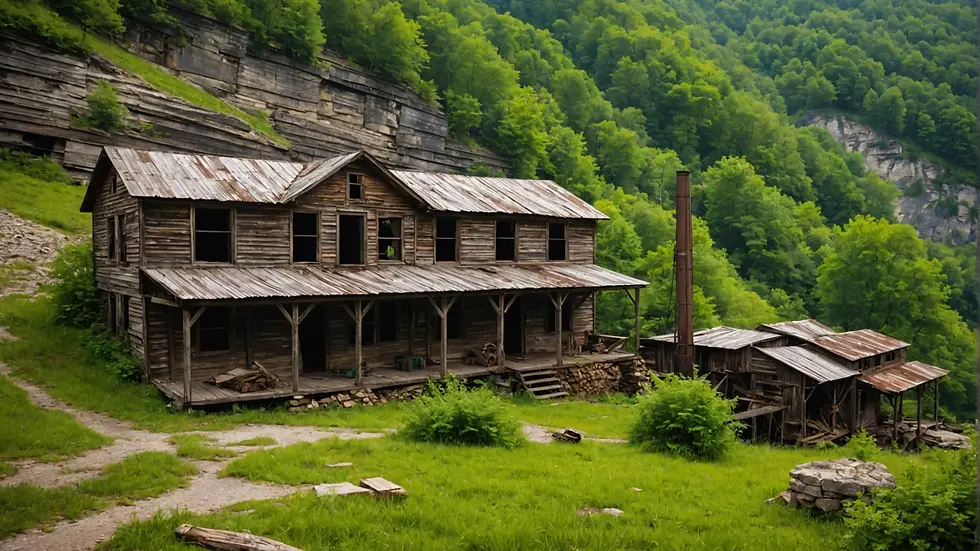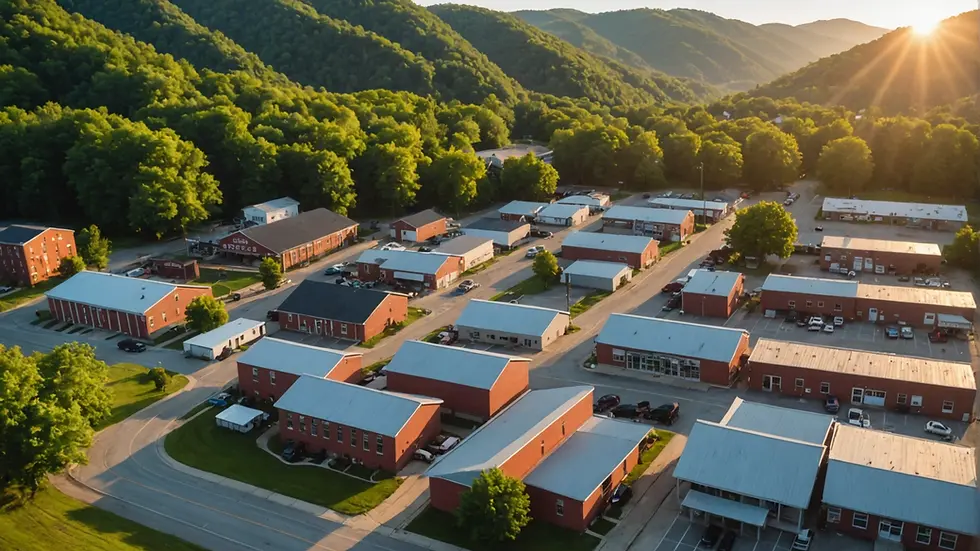Is the End Near for Coal Mining in Harlan, KY? Exploring the Unknown Future of a Historic Industry
- Nov 9, 2024
- 4 min read
Updated: Jan 8, 2025
Harlan, Kentucky, is a community shaped by its scenic Appalachian beauty and a deep connection to coal mining. For generations, coal mining was the economic backbone, providing jobs and supporting families. Today, as we navigate a changing energy landscape, many are asking: Is the end truly near for coal mining in Harlan?
The rise of alternative energy sources, tightening environmental regulations, and shifts in the economy have posed serious challenges to coal mining. This post examines the factors influencing coal's decline and considers the way forward for a community that has depended on this historic industry.
The Glory Days of Coal Mining
Harlan County has a proud mining heritage. At its peak in the 1950s, the county had over 90 active coal mines, employing thousands of workers. The economic influence of coal mining extended beyond paychecks, driving local businesses. One estimate suggests that for every mining job, at least 2.5 additional jobs were created in related sectors, such as retail and services.

During coal's prime, families built homes, funded education, and saved for the future based on the wealth generated from below the earth’s surface. The spirit of community flourished, rooted in shared work experiences and the triumphs of resilience. Today, it is essential to honor those whose lives were woven together through the fabric of coal mining, forming lasting friendships through shared labor.
Factors Leading to the Decline
The era of coal mining in Harlan is dimming due to several critical factors:
Competition from Alternative Energy Sources: The growth of renewable energy options, such as wind and solar, has transformed the energy market. By 2022, renewable energy sources contributed around 25% of the nation’s electricity, while coal dropped to just 22%. These cleaner and often cheaper energy alternatives are reshaping the demand for coal mining.
Environmental Concerns: The environmental impact of coal mining—highlighted by air pollution and habitat destruction—has spurred public outcry for change. Studies show that coal-fired power plants account for over 70% of sulfur dioxide emissions, leading to health risks and climate change. Consequently, local communities are increasingly advocating for cleaner energy solutions.
Regulatory Changes: Stricter legislation on emissions and workplace safety has made coal mining more challenging. For instance, the Environmental Protection Agency has implemented regulations that require costly upgrades to outdated facilities, further straining resources. In 2020, nearly 6,000 mines closed across the U.S., many of them due to regulatory pressures.
Economic Shifts: The regional economy has changed dramatically. Manufacturing jobs have declined, and younger people are leaving for urban centers, where better opportunities await. Research indicates that between 2000 and 2015, Harlan County lost approximately 15% of its population, exacerbating economic challenges and limiting available labor for industries tied to coal.

These elements combine to create significant challenges for the coal industry, resulting in job losses and economic instability.
The Impact on the Community
The downturn of coal mining has hit Harlan's community hard. As families lose vital income, many are forced to make tough decisions about their futures. The consequences ripple through the local economy, with a decline in purchasing power leading to business closures and struggling schools.
However, the residents of Harlan show remarkable resilience. Many are pivoting towards tourism and agriculture, inspired by the area's natural beauty and rich culture. For example, local initiatives are exploring opportunities to develop hiking trails and promote historical sites, tapping into the tourism market.

Moreover, locals are advocating for support to transition away from coal. Community programs aim to provide retraining for miners, enabling them to acquire skills for jobs in renewable energy and technology fields. Statistics suggest that wellness programs and job retraining can lead to higher employment rates, fostering growth and stability.
Looking Ahead: The Future of Coal Mining in Harlan
What does the future hold for coal mining in Harlan? While the path may be fraught with challenges, there is a sense of hope.
Community leaders and organizations are actively seeking solutions to support displaced workers and foster economic growth. The development of renewable energy projects, such as wind farms or solar installations, could create new job avenues. In fact, transitioning to renewable energy could double the number of jobs available in the county within the next decade.
Investing in education, infrastructure, and small businesses will help Harlan diversify its economy. Focusing on sustainable practices will lead to a more resilient future.
Ultimately, Harlan's journey reflects themes of survival, adaptation, and hope. The industry faced adversity, but the community's spirit remains strong, embodying the essence of its rich heritage.
Embracing Change for a Brighter Future
As Harlan approaches this crossroad, the community must unite to shape its future. While the decline of coal mining signifies the end of one era, it does not need to mark the conclusion of Harlan itself. By embracing innovation and exploring technology-driven opportunities, the community can turn existing challenges into pathways for growth and prosperity.
The legacy of coal mining will always be a part of Harlan's identity, but the community's determination to adapt and evolve is the key to building a brighter tomorrow. The question remains: Is the end near for coal mining in Harlan, or is this merely the dawn of a new chapter? Only time will reveal the answer.


Comments